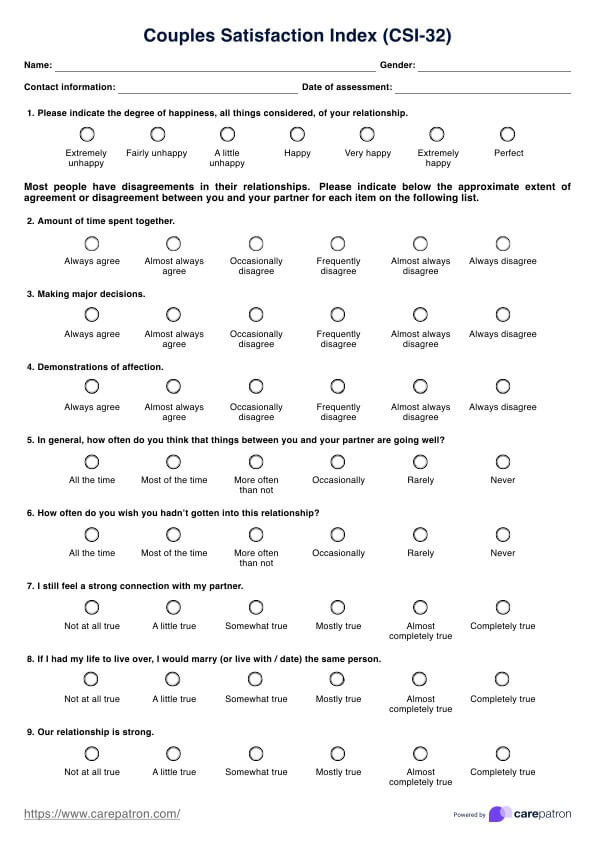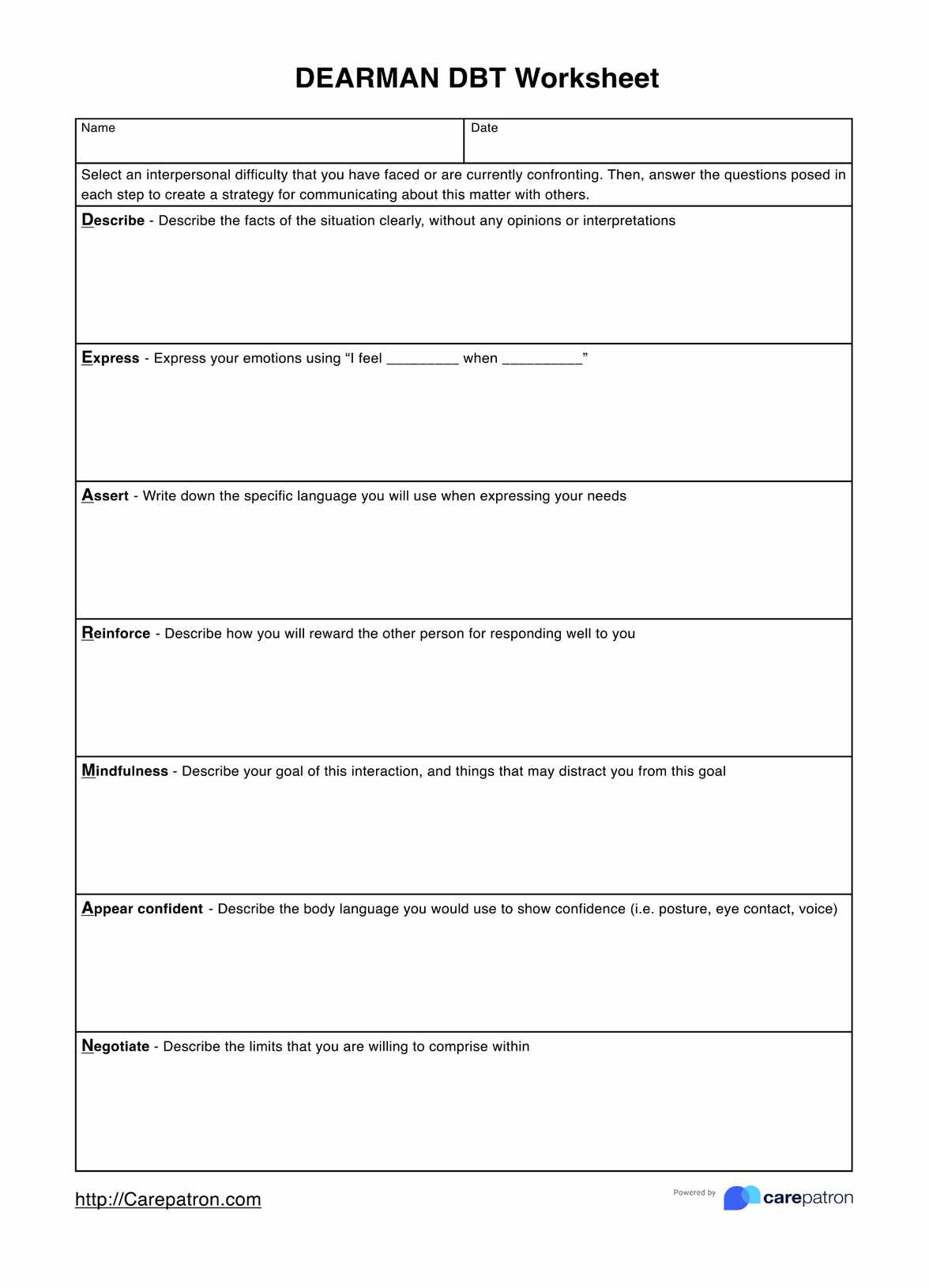Sleep Hygiene Checklist
Enhance sleep quality with our Sleep Hygiene Worksheet. Improve routines and environment, manage stimulants & relax for better rest. Ideal for healthcare professionals.


What is a Sleep Hygiene Checklist?
A Sleep Hygiene Checklist is a valuable resource for assessing and improving sleep habits. It is a structured list of key factors and behaviors contributing to good sleep hygiene. The checklist is a practical tool for individuals to evaluate their sleep routines, identify areas for improvement, and implement positive changes to promote better sleep quality.
Typically, a Sleep Hygiene Checklist covers various aspects of sleep hygiene, addressing both behavioral and environmental factors that can impact sleep. It often includes items related to sleep schedule, bedroom environment, lifestyle choices, and relaxation techniques.
In terms of sleep schedule, the checklist may prompt individuals to establish consistent bedtimes and wake-up times to regulate their internal body clock. It may also emphasize the importance of ensuring adequate sleep duration, typically ranging from 6 to 8 hours for adults.
Regarding the bedroom environment, the checklist may highlight the need for a quiet, dark, and cool sleeping environment. It may suggest removing electronic devices, such as smartphones or TVs, from the bedroom to minimize distractions and promote relaxation. Additionally, the checklist may emphasize the significance of a comfortable mattress and pillow to support proper sleep posture.
The Sleep Hygiene Checklist may also address lifestyle choices that can affect sleep. It might encourage individuals to limit or avoid caffeine intake, particularly close to bedtime, as caffeine is a stimulant that can disrupt sleep. It may recommend minimizing alcohol and nicotine consumption, as these substances can also interfere with sleep patterns.
Furthermore, the checklist suggests relaxation techniques to prepare the body and mind for sleep. This includes practicing deep breathing exercises, engaging in progressive muscle relaxation, or incorporating mindfulness or meditation practices into the bedtime routine.
By using a Sleep Hygiene Checklist, individuals can systematically evaluate their sleep habits, track their progress, and make targeted adjustments to improve their sleep hygiene. It is a practical resource to enhance sleep quality and promote overall well-being. However, it is important to note that individual sleep needs and preferences may vary, and consulting a healthcare professional or sleep specialist can provide personalized guidance for optimizing sleep hygiene.
Sleep Hygiene Checklist Template
Sleep Hygiene Checklist Example
How does it work?
Printable Sleep Hygiene Checklists are a straightforward and effective way for individuals to improve their sleep hygiene and enhance their overall sleep quality. The worksheet provides a structured framework that guides users through steps and prompts, allowing them to assess their current sleep habits and make positive changes. Here is how the worksheet works:
Download and Print
Begin by downloading the Printable Sleep Hygiene Worksheet. Print out the checklists to have a physical copy that you can easily refer to and fill out.
Fill in Personal Information
Start by entering your name and the date in the designated spaces provided at the top of the worksheet. This ensures that your progress is documented and helps you keep track of your sleep hygiene journey.
Evaluate Sleep Schedule
The worksheet prompts you to establish a consistent sleep schedule. Fill in the desired bedtime and wake-up times that align with your sleep goals. Aim for a recommended sleep duration, typically between 6-8 hours, and record it on the worksheet.
Assess Sleep Environment
Evaluate your sleep environment by considering noise, lighting, temperature, and comfort. Make notes on the worksheet about any adjustments you can make to create a more sleep-friendly environment, such as using earplugs, installing blackout curtains, or adjusting the thermostat.
Manage Stimulants
Take note of your current consumption of caffeine, alcohol, and nicotine. The worksheet encourages you to limit or avoid these stimulants, particularly in the evening or close to bedtime. Write down strategies you can implement to reduce or eliminate these substances from your routine.
Explore Relaxation Techniques
The worksheet suggests relaxation techniques that can help you unwind before bed. Examples include deep breathing exercises, progressive muscle relaxation, or mindfulness meditation. Select the techniques that resonate with you and commit to incorporating them into your nightly routine.
Additional Tips
The worksheet offers additional tips and reminders to support healthy sleep habits. These may include establishing a relaxing bedtime routine, engaging in regular exercise (avoiding it too close to bedtime), and refraining from daytime napping.
By diligently filling out the Printable Sleep Hygiene Checklists and implementing the recommendations and strategies provided, you can gradually improve your sleep hygiene and achieve better sleep quality. Regularly revisit the checklists to track your progress and make adjustments as needed.
When would you use this Template?
The Sleep Hygiene Checklist is a versatile resource that can be used in various situations where improving sleep habits and promoting better sleep hygiene is the goal. Here are some relevant scenarios in which this template can be handy:
Personal Sleep Assessment
Individuals concerned about their sleep patterns and want to evaluate their sleep hygiene can utilize the Sleep Hygiene Worksheet as a self-assessment tool. It allows them to systematically review their sleep schedule, environment, stimulant intake, relaxation practices, and overall sleep habits. Using the worksheet, they can identify areas needing improvement and take proactive steps towards better sleep health.
Healthcare Professional Guidance
Healthcare professionals, such as doctors, sleep specialists, therapists, or nurses, can use the Sleep Hygiene Worksheet to guide their patients in improving their sleep habits. It is an educational tool during consultations or therapy sessions, providing a structured format to discuss and address sleep-related concerns. By utilizing the worksheet, healthcare professionals can ensure they cover essential topics and help patients develop personalized sleep hygiene strategies.
Sleep Clinics and Sleep Disorder Centers
Sleep clinics and sleep disorder centers can incorporate the Sleep Hygiene Worksheet into their assessment and treatment protocols. It can be used during initial evaluations to gather information about patients' sleep routines and habits. The worksheet provides a standardized format for clinicians to evaluate and discuss various sleep hygiene factors with patients, aiding in the formulation of tailored treatment plans.
Wellness Programs and Workshops
Organizations or wellness programs that promote overall well-being and healthy lifestyle habits can include the Sleep Hygiene Worksheet in their resources. It can be used in workshops, seminars, or educational programs on sleep health. By providing participants with this worksheet, they can actively assess their sleep habits, gain awareness about sleep hygiene, and take steps toward optimizing their sleep quality.
Self-Help and Educational Websites
Online platforms and websites dedicated to sleep health, wellness, or self-help can offer the Sleep Hygiene Worksheet as a downloadable resource. It gives users a practical tool to evaluate and improve their sleep hygiene independently. By accessing and utilizing the worksheet, individuals can educate themselves, implement positive changes, and track their progress.
The Sleep Hygiene Checklist is suitable for personal use, healthcare professionals, sleep clinics, wellness programs, and online platforms aiming to improve sleep hygiene. By using this resource, individuals can gain insights into their sleep habits, make informed changes, and work towards achieving better sleep quality and overall well-being.
Benefits
Using the Free Sleep Hygiene Checklist template offers several benefits for individuals seeking to improve their sleep habits and overall sleep quality:
Structured Assessment
The template provides a structured framework that allows individuals to assess their sleep habits in a systematic manner. It covers key aspects of sleep hygiene, including sleep schedule, environment, stimulant management, relaxation techniques, and additional tips. This structured assessment helps users identify areas for improvement and develop targeted strategies.
Clear Guidance
The template offers clear and concise guidance on various sleep hygiene factors. It provides specific recommendations and prompts individuals to set consistent bedtime and wake-up times, create a sleep-friendly environment, manage stimulants, and practice relaxation techniques. This clear guidance helps users understand what steps to take to enhance their sleep hygiene.
Personalization
The Free Sleep Hygiene Worksheet can be customized to suit individual needs and preferences. Users can fill in their information, tailor their sleep schedule, and make personalized notes and adjustments based on their unique circumstances. This personalization aspect allows for a more individualized approach to improving sleep habits.
Awareness and Education
By using the template, individuals become more aware of the importance of sleep hygiene and gain knowledge about its different aspects. The worksheet serves as an educational tool, highlighting the significance of factors such as a consistent sleep schedule, a sleep-friendly environment, and the impact of stimulants on sleep quality. This awareness empowers individuals to make informed choices and prioritize their sleep health.
Progress Tracking
The template enables users to track their progress over time. By consistently filling out the worksheet and implementing the recommended strategies, individuals can monitor changes in their sleep patterns, evaluate the effectiveness of interventions, and make adjustments as needed. This tracking feature helps individuals stay accountable and motivated in their journey toward better sleep hygiene.
Accessibility and Cost-effectiveness
The Free Sleep Hygiene Worksheet is easily accessible and cost-effective. It can be downloaded and printed from various sources, making it readily available to individuals seeking to improve their sleep habits. The fact that it is free eliminates any financial barriers and allows widespread access to a valuable tool for sleep hygiene improvement.
To find more helpful tools for your practice and better satisfy your clients, explore the sleep hygiene worksheet template and the relaxation techniques template.
Research & Evidence
Sleep hygiene checklists have gained recognition as valuable resources in promoting healthy sleep habits and improving sleep quality. While specific research on the history of sleep hygiene checklists is limited, their development and utilization stem from the broader field of sleep medicine and behavioral interventions.
Research studies have consistently emphasized the importance of good sleep hygiene practices for optimal sleep health. For example, a study by Pilcher, Ginter, and Sadowsky (1997) found that individuals with better sleep hygiene practices reported higher sleep quality and lower daytime sleepiness. This highlighted the significance of incorporating sleep hygiene principles into daily routines.
The use of checklists as educational tools in healthcare settings has a well-established history. Checklists have been employed in various domains to facilitate patient education, self-assessment, and behavior change. In sleep hygiene, checklists are structured to guide individuals in evaluating their sleep routines and implementing positive changes.
Moreover, behavioral interventions, including checklists, have demonstrated efficacy in improving sleep quality. A meta-analysis by Trauer, Qian, Doyle, Rajaratnam, and Cunnington (2015) reviewed the effectiveness of non-pharmacological interventions for insomnia and found that sleep hygiene practices showed positive effects on sleep outcomes when incorporated into treatment protocols.
While specific studies focusing solely on sleep hygiene checklists are limited, the broader body of research on sleep hygiene practices and behavioral interventions supports their use as effective tools for promoting healthy sleep habits. Sleep hygiene checklists serve as practical resources to educate individuals, enhance self-awareness, and facilitate behavior change to improve sleep quality.
References
Pilcher, J. J., Ginter, D. R., & Sadowsky, B. (1997). Sleep quality versus sleep quantity: Relationships between sleep and measures of health, well-being and sleepiness in college students. Journal of Psychosomatic Research, 42(6), 583-596.
Trauer, J. M., Qian, M. Y., Doyle, J. S., Rajaratnam, S. M., & Cunnington, D. (2015). Cognitive behavioral therapy for chronic insomnia: A systematic review and meta-analysis. Annals of Internal Medicine, 163(3), 191-204.
Harvard University Sleep & Development Lab. (n.d.). Sleep hygiene checklist: Strive Weekly. Retrieved from https://sdlab.fas.harvard.edu/files/sdlab/files/sleephygienecheckliststriveweekly.pdf
University of Oklahoma. (n.d.). Sleep hygiene. Retrieved from https://ou.edu/content/dam/wellness/docs/SleepHygiene.pdf
University of Washington. (n.d.). Sleep hygiene tips. In D. Kalafat, E. McCurry, & J. Robinson (Eds.), Trauma-Focused Cognitive-Behavioral Therapy: Treatment applications (Client Handouts, Emotion Regulation Skills, pp. 4). Retrieved from https://depts.washington.edu/uwhatc/PDF/TF-CBT/pages/4%20Emotion%20Regulation%20Skills/Client%20Handouts/Sleep%20hygiene/Sleep%20Hygiene%20Tips.pdf
Vassar College Counseling Service. (2020, March). Sleep hygiene handout for clients. Retrieved from https://offices.vassar.edu/counseling-service/wp-content/uploads/sites/31/2020/03/sleep-hygeine-handout-for-clients.pdf
Commonly asked questions
While individual results may vary, using Sleep Hygiene Checklist as part of a comprehensive approach to improving sleep hygiene has shown promise. Research suggests that incorporating sleep hygiene practices, including checklists, can positively impact sleep quality and daytime functioning.
Sleep Hygiene Checklists can be a useful self-help tool for individuals seeking to improve their sleep habits. However, it is important to consult a healthcare professional for a comprehensive evaluation and appropriate guidance for persistent sleep issues or underlying sleep disorders.
Sleep Hygiene Checklists are generally suitable for individuals looking to optimize their sleep habits. However, it is important to consider individual differences and specific needs. Some individuals may have unique circumstances or underlying medical conditions that require tailored approaches to sleep management.


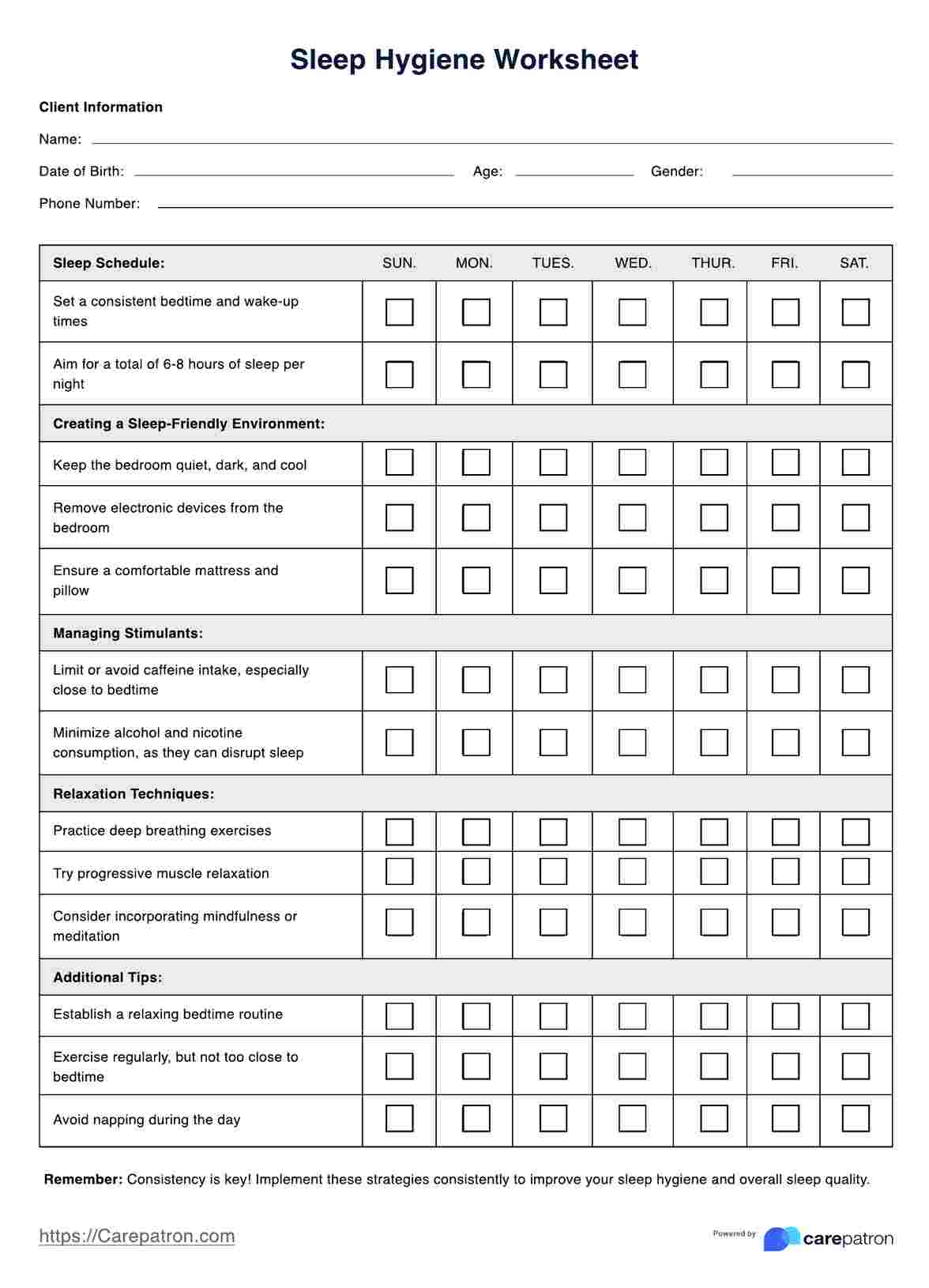
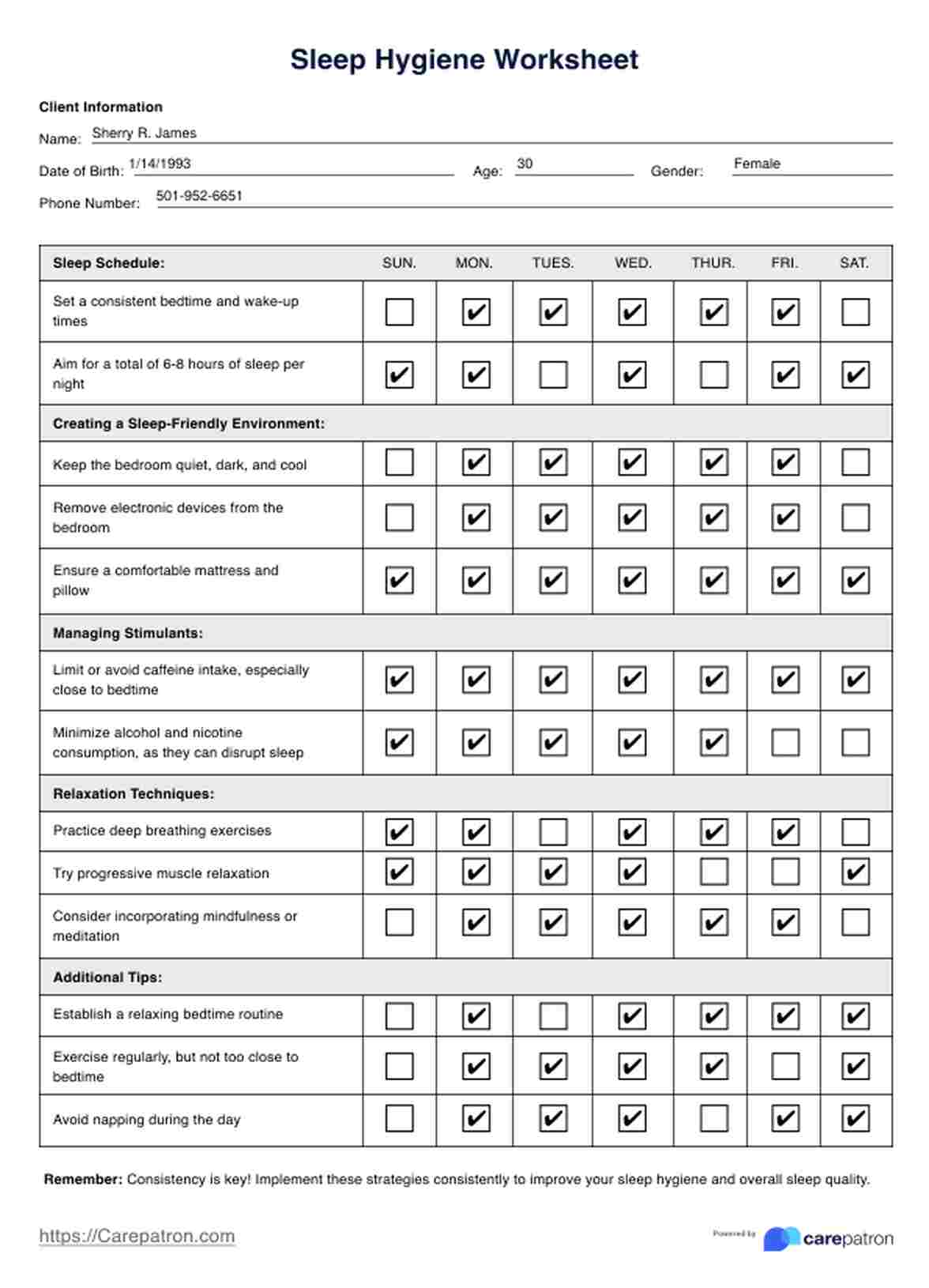

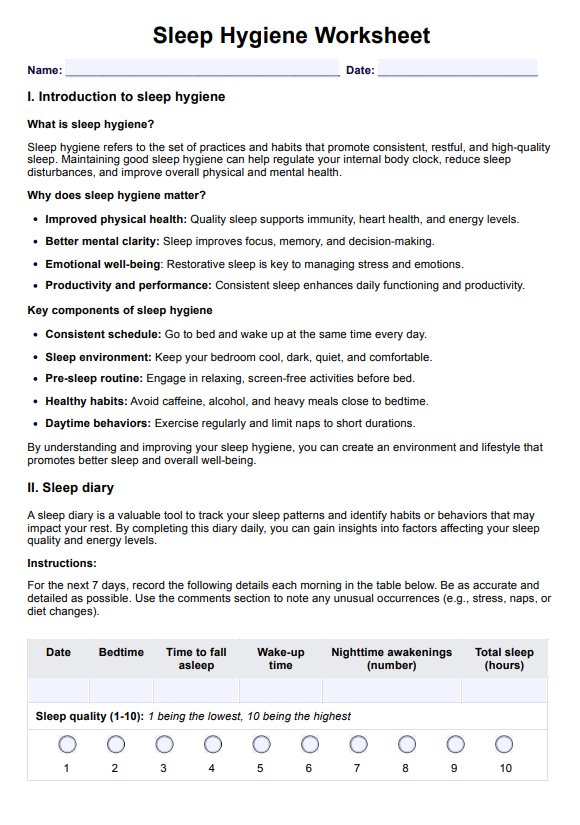
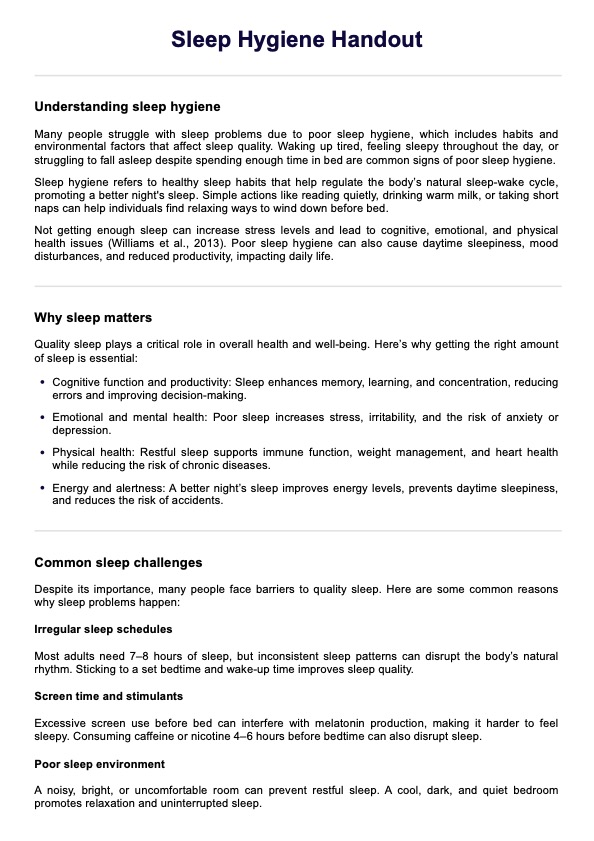

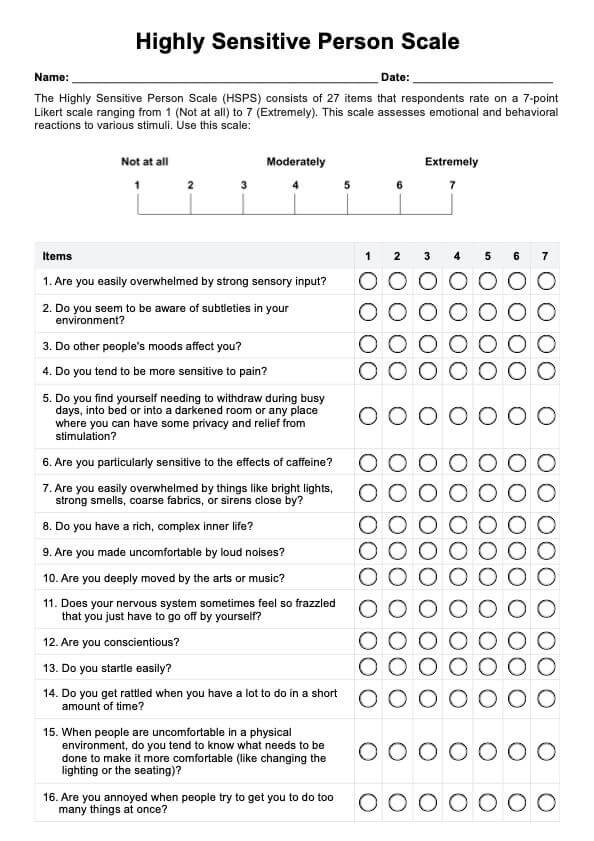










-template.jpg)












































































